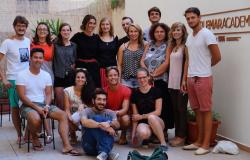The U.S. Department of Defence is installing a ground station for the ultra-high frequency satellite communication network at the U.S. Naval Radio Transmitter Facility in Acate a few kilometres from the Niscemi Nature Reserve in Sicily. The Riserva Naturale Sugherata di Niscemi, in the province of Caltanissetta was officially recongnised in 1997 to protect its outstanding examples of its forest of cork trees, very similar to the evergreen holm oak.
On the 24th of June, the citizens of Acate staged a fake funeral as part of a series of protests against the potential health risks of installing the untested MUOS in an inhabited area. The base near Niscemi has raised protest from locals since 2009, after the secret military satellite dish building project became known to the public.
Along with transmitter stations in uninhabited areas in Virginia, Hawaii and Australia, the Acate MUOS (Mobile User Objective System) base will function as a relay station for instantaneous multimedia communication between U.S. armed forces personnel stationed around the world, and replacing the current system, which will soon expire.
The first satellite of four was launched on the 24th of February and the next is set to launch in 2013, with the satellite network slated for completion and activation in 2015.
No MUOS, a committee of concerned citizens and scholars, has held several public meetings to alert citizens to the risks of the site based on studies by Massimo Zucchetti and Massico Coraddu from the Turin Polytechnic.
Though the local government will be unable to determine the effects of the satellite dishes until they become operational, academics say the 20-metre-diametre and 150-metre-tall dishes will likely disrupt electrical devices, including airplanes, pacemakers, and electric wheelchairs, for a more than 140 kilometre radius. In the meantime, the NOMUOS committe has prepared a petition asking President Napolitano and the government to intervene.












